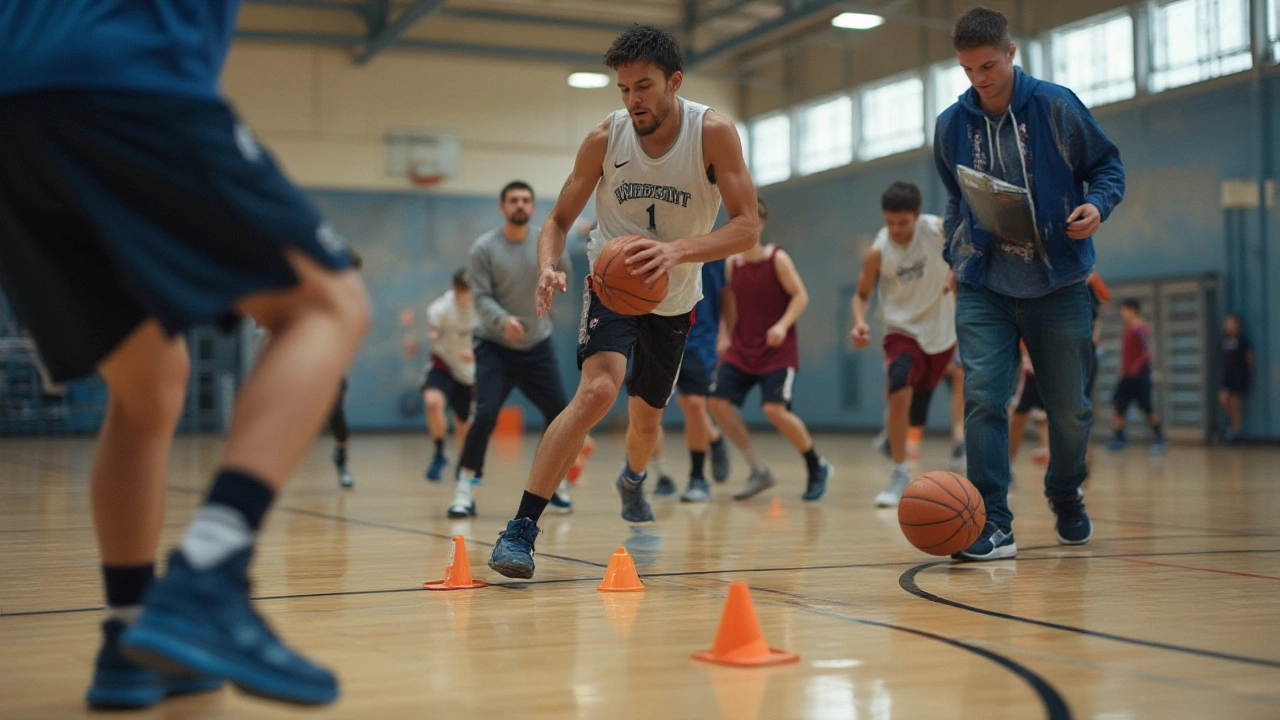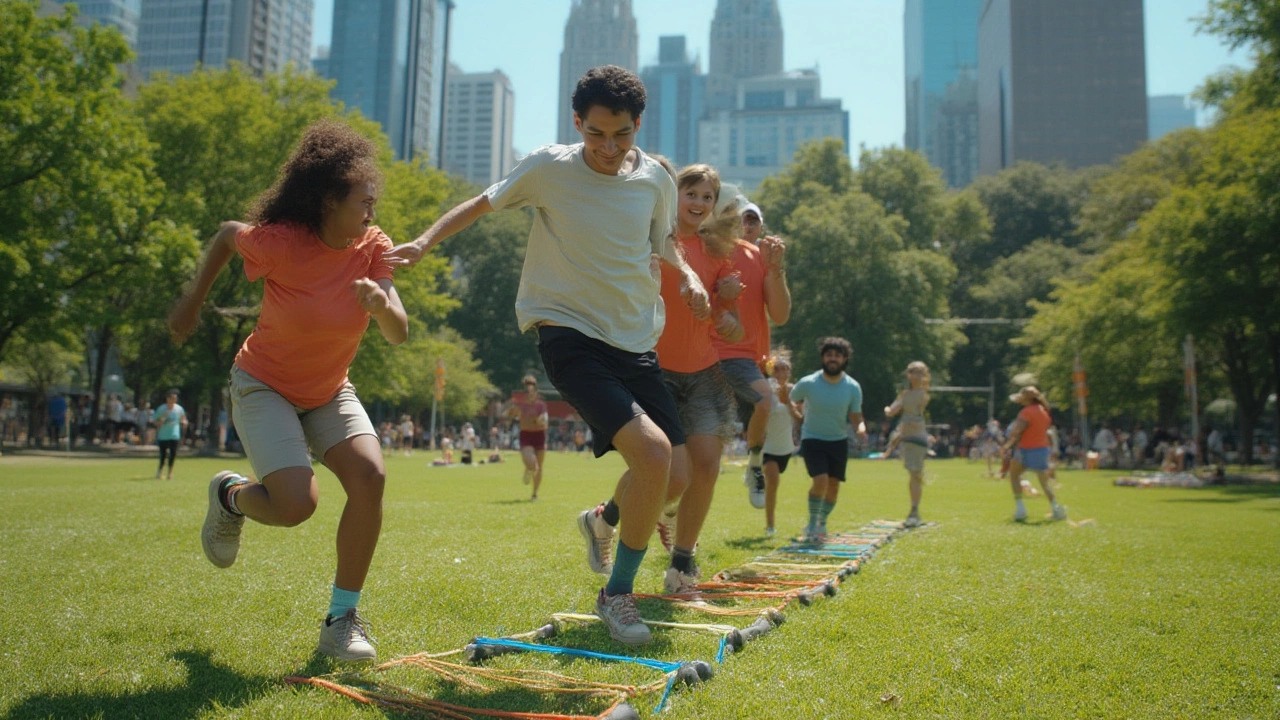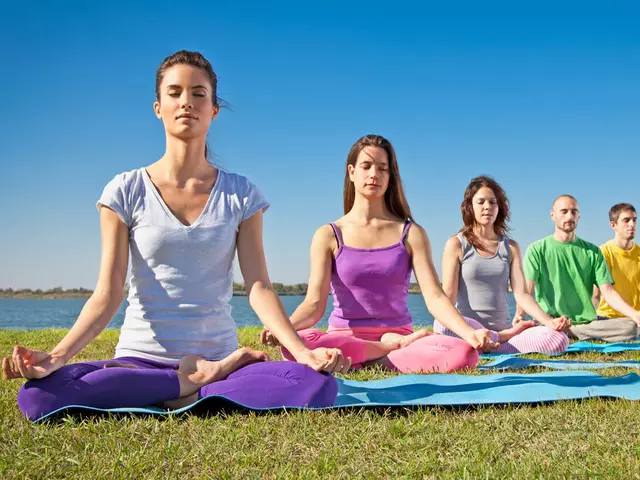Picture this. You’re watching a tennis tournament, and the players seem to glide, pivot, and leap with zero wasted effort. Or maybe you spot a salsa dancer whose feet move in dazzling synch, keeping their balance even on one leg. Here’s the thing: nobody’s born with that kind of footwork. It’s a secret ingredient that cuts across sports, dance, daily movement—even preventing injuries. And yet, for something literally beneath our feet, most people never give footwork a second thought. If you want to move better, feel more confident, or just stop tripping over the dog, upgrading your footwork is a game-changer. Let’s dig into the nuts and bolts that make it work.
What is Footwork, Really?
You’ll hear coaches and trainers talk about footwork like it’s some mystical force, but it’s actually pretty straightforward: footwork is the set of actions your feet use to support, balance, and shift your whole body through space. Sounds boring? Not when you realize it’s at the core of everything—walking, running, sidestepping puddles, or playing soccer with your kid. Good footwork means your feet are in the right spot, at the right time, without stumbling or overthinking.
Take boxing for example. Trainers say, “It’s all in the feet.” Muhammad Ali wasn’t floating like a butterfly just because he practiced uppercuts; he had razor-sharp footwork. In dance, too, every spin or dip starts with how the feet move. Even standing up straight at your desk involves micro-adjustments. Soldiers practice foot drills for hours so instinct kicks in when it counts. According to a 2023 Harvard Health study, focusing on balanced foot movement cuts fall risk by 53% in adults over 50. Not bad for something most folks never train directly.
But why do so many people have poor footwork? A lot of us grow up wearing stiff shoes, sitting for hours, and barely using the many bones, muscles, and joints below the ankle. As a result, when life calls for quick moves—think running for a bus or avoiding a rogue Lego at night—we end up unstable, slow, and sometimes hurt. Building better footwork starts with getting your feet out of autopilot.
Footwork isn’t just about sports glory. Ask any physical therapist: improving the way your feet and body connect has ripple effects. It revs up reaction speed, protects knees and hips, and even sets up better posture for your back and shoulders. A good chunk of common workplace injuries—slips, trips, falls—tie back to missed steps or slow foot adjustments. That’s why grocery store floors and hospital hallways are covered in ‘Slippery When Wet’ signs. It’s a footwork warning in disguise.
If you want to start noticing your own footwork, try this: stand up and close your eyes. Are you wobbling? Now shift weight from heel to toe, and try moving side to side. Every adjustment you make is an example of real-life footwork at play, right now. It’s not just kids in soccer cleats or pro dancers who benefit; it’s anybody who moves at all.
Benefits of Great Footwork (and Why You Should Care)
People usually think masterful footwork is only for athletes, but honestly, everyone could use sharper moves. Want to avoid twisted ankles and embarrassing slips? Hope to keep playing pick-up hoops at 40 or take the stairs without clutching the railing? Footwork is at the heart of it all. Here’s something wild—a 2022 review in the Journal of Sports Sciences found that advanced footwork training improved knee health in recreational runners by 43%, while nearly eliminating recurring ankle sprains.
Let’s break down the perks even more:
- Balance: Good footwork helps your body use tiny stabilizing muscles you probably didn’t even know you had. That means less wobbling and fewer mishaps, even when things get unpredictable. Physical therapists stress that balance tasks, like standing on one foot or pivoting fast, are built on foundational footwork.
- Agility: You see this most in sports—soccer defenders darting left or right, tennis pros switching direction in a blink. The quicker your feet adjust, the faster your whole body can respond.
- Coordination: Remember learning to hopscotch, or skip rope? Those little kid games aren’t just fun—they’re templates for high-level coordination. If you still struggle skipping steps, that’s a clear sign your footwork could use a tune-up.
- Protecting Joints: Every “klutz” moment—rolling your ankle off a curb or slamming your knee mid-turn—is really a footwork issue. The better you move, the less you risk tweaks or chronic pain.
One quick scan of professional athletes proves the point. Basketball players like Steph Curry drill ‘ladder runs’ and ‘cone shuffles’ for hours. Ballet dancers rehearse foot placement by marking tape on the floor. The more precise their steps, the smoother and safer their movements. Even in rehab clinics, stroke survivors use colored floor dots to retrain their feet for everyday actions.
Check this out. In 2024, a study at Stanford looked at older adults who did 10 minutes of footwork drills, five days a week. After just two months, their walking speed improved by 19%, and everyday aches dropped by almost half. Clearly, you don’t need a gym membership or a sports background—just a willingness to put your feet to work.
“A well-coordinated step is the first defense against injury and the hidden engine behind high performance.” — Dr. Laura Nelson, Orthopedic Specialist
Final takeaway? Great footwork helps every age group, from kids learning to run, to adults hoping to age safely at home. It even sharperens your focus and body awareness, since you’re forced to pay better attention to where you are in space.

Mastering the Fundamentals: Everyday Footwork Moves and Drills
You don’t need fancy gear or a sports coach to master the basics. Classic moves are hiding in plain sight, and the best drills barely cost a thing. Consistency is what counts. Curious where to start?
Take a look at this table. It outlines a few of the foundational drills recommended by sports therapists and trainers around the world.
| Drill Name | Description | Time Needed |
|---|---|---|
| Heel-to-Toe Walk | Walk in a straight line, touching heel to toe in every step. Focus on balance. | 3 minutes |
| Side Shuffle | Shuffle quickly sideways for 10 steps, then return. Repeat both directions. | 2 minutes |
| Ladder Steps | Step quickly through a tape-marked or chalk “ladder” on the ground. Both feet hit every box. | 3 minutes |
| Box Drill | Hop or step in a box shape—forward, right, back, left. Repeat clockwise and counter. | 4 minutes |
| Single-Leg Balance | Balance on one foot for 30 seconds. Add movement (arms or other foot) to increase challenge. | 2 minutes |
Here’s how you can put those moves into a short circuit you can do just about anywhere:
- Start with the heel-to-toe walk a few times up and down your hallway.
- Move into side shuffles, keeping knees bent and back straight.
- Add some ladder steps on a strip of tiles or chalk lines for quick feet.
- Practice the box drill, hopping or stepping around an imaginary or marked box.
- Finish with single-leg balance—if you wobble, that’s fine! Shift to the other foot.
Do this sequence twice, three days a week, and you’ll feel real progress. For those looking to ramp things up, increase speed, add light hand weights, or close your eyes during the balance drills (if you’re in a safe spot!). The harder your brain and feet have to work together, the sharper everything gets.
Sports coaches suggest spicing up footwork practice with games. Try standing with a partner and playing mirror—a simple copycat game where one leads, and the other mimics every foot movement. Or put sticky notes on your floor and aim to step only on the colored squares your friend shouts out. It’s a fun twist, but the benefits translate directly into better reaction time when you least expect it.
If you’re feeling creaky or dealing with injuries, check with a physical therapist for custom exercises. Sometimes stiffness in your lower back, hips, or feet can throw your footwork out of whack. Simple stretches for calves and ankles, plus rolling out your feet with a tennis ball, go a long way to loosen up the foundation.
The best thing? Unlike most workouts, you don’t need to break a sweat or carve out huge time blocks. Five to ten minutes done with focus and intention will change how your body feels in motion—or standing still. Want a test? Video yourself doing a short ladder drill today, then try again in three weeks. The difference will surprise you.
Footwork in Action: Real-World Applications and Pro Tips
Here’s where the rubber meets the road. If sharp footwork can help a pro athlete win medals or a dancer wow the crowd, imagine what it can do for everyday life. Picture walking busy city streets, dodging bags and people with ease, or feeling sure-footed on a rainy sidewalk. Great footwork makes any day less stressful and way more fun.
If you’re parenting toddlers, you know quick, stable movement is critical—kids love darting in unexpected directions! Or think about folks who deliver mail, groceries, or packages all day. The difference between an easy shift and a sprained ankle is all about fast, solid steps. Supermarket workers even practice ‘pivot turns’ to make aisles safer and smoother— a little-discussed but essential footwork trick.
Now let’s get sports-specific. Footwork is clutch in basketball for defending, in tennis for setting up shots, in soccer for changing pace. But it’s huge in less flashy spots too. Working on a ladder or painting the ceiling? Quick foot changes save your back (and your toes). Even surgeons use footwork, shifting weight to stay steady during long procedures. There’s no job or lifestyle that can’t benefit.
Here are some tips borrowed straight from the pros:
- Keep your feet ‘light’—don’t stomp or plop as you move. The lighter your landing, the better your control.
- Use your big toe for push-off. Sprinters and soccer stars think about this with every explosive move.
- Stay slightly on the balls of your feet when ready to move. Basketball players call this the ‘ready position.’
- Let your knees bend a bit and relax. Locked knees slow you down and set you up for trips.
- Scan the ground ahead—ahead of time. No shame in double checking where your next step lands.
Useful data backs up just how important these everyday shifts are. According to the CDC, over 8 million people visit the ER each year due to slips and falls—and nearly half of these accidents could have been prevented with better body awareness and foundational footwork. Companies like FedEx have introduced “movement efficiency” clinics, training drivers and workers to adjust foot placement and posture on the fly—cutting workplace injuries by over 30% in internal reports shared in 2023.
Thinking long-term? Add balance boards or wobble cushions for extra challenge; they keep you guessing and alert. Some apartment buildings are even putting tiny agility ladders in hallways for tenants to practice quick footwork on the way out the door.
Don’t forget, like any skill, you’ll build muscle memory if you keep at it. Integrate footwork drills into warmups, cool downs, or even TV ad breaks. After a while, you’ll walk a little taller, pick up your feet faster, and bounce back from awkward moments with a grin instead of a groan.







